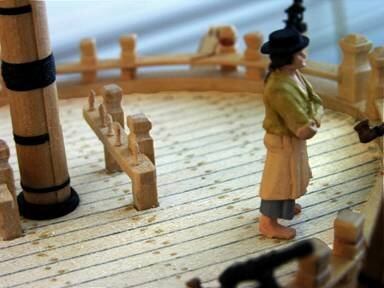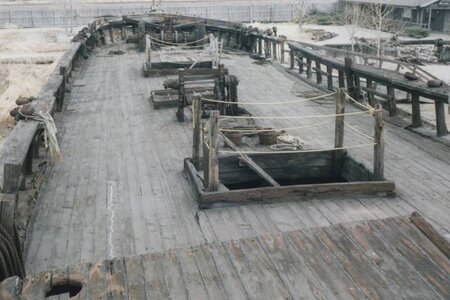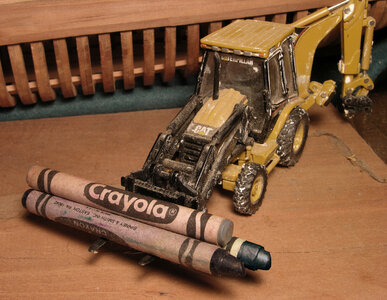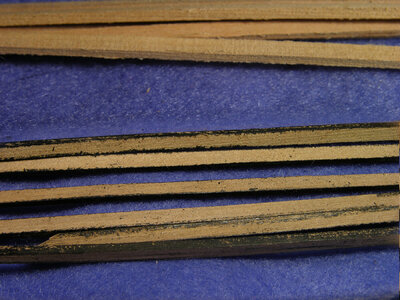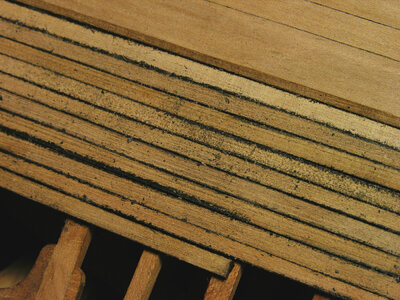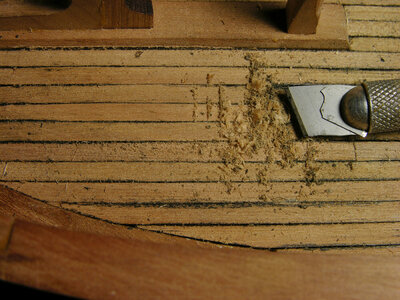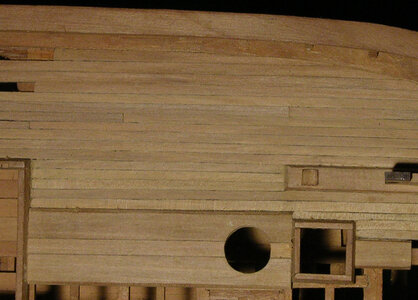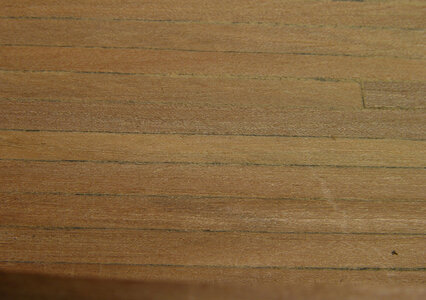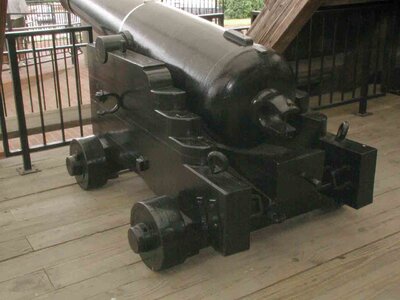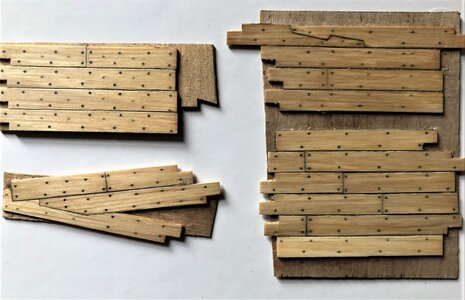decking and caulking is a matter of personal taste. for me i do not like the look of stark white decks with black stripes. like this
View attachment 198532
decks in reality are not snow white they are gray or shades of tan and grayish browns and the caulking is not clean sharp black lines.
View attachment 198533
after trying every idea from black paper to paint i came up with this idea.
i brought simple crayons to the job.
View attachment 198534
i take my deck planks which in this case is natural pearwood clamp them together and color the edges. At this stage it looks as ugly as sin with crayon all over the planks. i have warmed up the crayon just a little before i coated the edges of the planks.
View attachment 198535
then i go ahead and lay the deck, really ugly isn't it! you would never think this would look nice
View attachment 198536
i made a scraper from a broken razor blade and scrape the deck
View attachment 198537
and here is the deck after i scraped off the excess crayon. What happens is the wax has a slight stickiness to it and because it is soft it works down between the planks, filling in any tiny gaps.
View attachment 198538
getting down really close
View attachment 198539
this is as realistic as i got to caulking a deck like the image below caulking is not even sharp black lines they fade in and out and in some cases the caulk lines almost blend into the planked deck.
like i said there are different strokes for different folks, some like stark white decks with sharp black lines, some like it more realistic, others just don't care one way or another.
View attachment 198540








